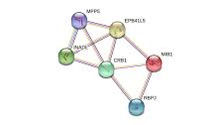BRIEF DESCRIPTION
Retinitis pigmentosa (RP) due to mutations in the crumbs homologue 1 (CRB1) gene. It's a specific form of RP known as RP12, and is characterized by severe vision loss before age 20 and preserved para-arteriolar retinal pigment epithelium (PPRPE). CRB1 retinitis pigmentosa include the typical symptoms of retinitis pigmentosa (i.e., night blindness, gradual loss of peripheral vision, and progressive degeneration of photoreceptors).
CRB1 mutations can also cause other retinal dystrophies, including Leber Congenital Amaurosis (LCA), which is the most severe case of early-onset retinal degeneration. The CRB1 gene encodes the Crumbs homolog-1 protein, this process is important for cell-to-cell contact, photoreceptor morphogenesis, and polarization of epithelial cells.
At present, there's no cure for retinitis pigmentosa, but medications can help treat complications. A medical professional can diagnose and manage the condition to improve symptoms.













